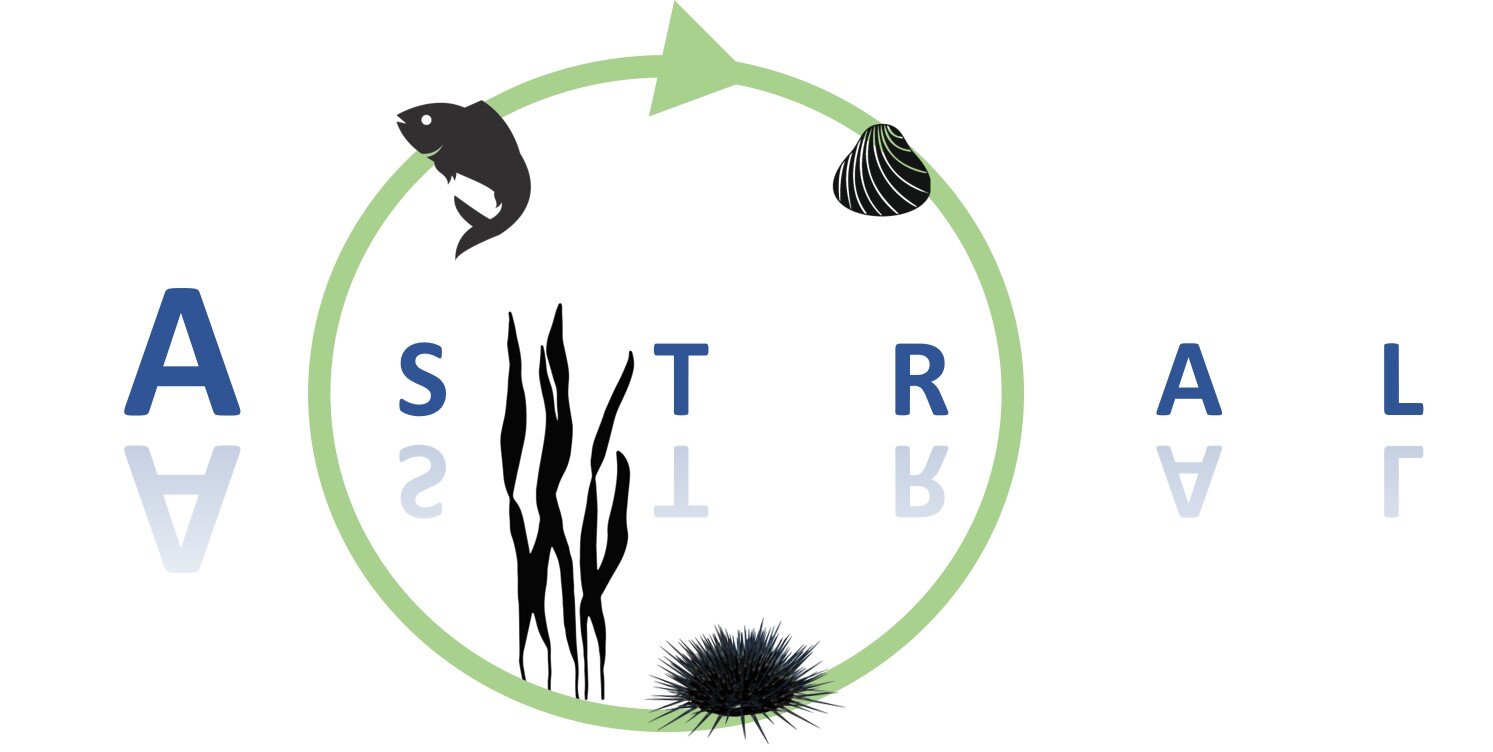Explaining Integrated Multi-Trophic Aquaculture (IMTA)
by Thierry Chopin - Research Professor, NORCE, Norwegian Research Centre AS, Bergen, Norway.
Professor of Marine Biology, University of New Brunswick, Saint John, Canada
Image Credit - Marine Institute Foras na Mara
In a world with an ever-growing human population, agriculture yields close to saturation and fisheries plateauing, decreasing or collapsing, aquaculture is poised to play a key role in the development of the food (and other non-food applications) production systems of the future. However, there is always room for improving production methods to make them more sustainable.
One of these innovative and sustainable practices is Integrated Multi-Trophic Aquaculture (IMTA), which combines, in the appropriate proportions and scales of management areas, the cultivation of species at two or more different trophic levels, based on their complementary ecosystem functions, such as fed species (e.g. finfish), particulate organic nutrient extractive species (e.g. shellfish and other invertebrates, herbivorous fish) and dissolved inorganic nutrient extractive species (e.g. macro- and micro-algae and plants).
Taking advantage of synergistic interactions between species, and the ecosystem services they provide, the aim is to ecologically design and implement aquaculture systems and practices for increased environmental sustainability, economic stability and social acceptability, through enabling regulations, and within holistic and circular economy approaches. IMTA contributes positively to the United Nations’ Sustainable Development Goals (SDG), especially SDG 14 (Life Below Water), but also to 10 other SDG (2, 3, 4, 5, 8, 9, 12, 13, 15 and 17).
IMTA is a bio-inspired design for ecosystem-based biomitigation that imitates what nature does (biomimicry). What was previously considered “wastes”, or “by-products”, of one species are now “co-products”, which can be used as recovered fertilizer and feed resources, and energy, by other species, considered additional crops providing economic diversification in more efficient and responsible food production systems, while bioremediation of nutrification takes place.
IMTA also has the pragmatic and visionary goal to move towards zero waste within an ecosystem-based management approach by emulating sustainable natural cycles and processes.
The scope of the IMTA concept is extremely broad, flexible and evolving. It can be applied worldwide to open-water or land-based systems, marine or freshwater (e.g. aquaponics) environments, and temperate or tropical climates.
It should be clear that IMTA is a concept, not a formula that can be reduced to a short, oversimplified definition. It is its versatility that makes IMTA remarkable. There is no ultimate IMTA system to feed the world, but a multitude of variations, resulting from the different conditions (climatic, environmental, biological, physical, chemical, economic, historical, societal, political, regulatory and jurisdictional) prevailing in the parts of the world where they operate. These lead to different choices in the design of the best locally suited IMTA systems.
Moreover, IMTA is more than just a nutrient flow story. This sustainable practice must also respect the environment, be in line with society values, create fair and gender-equitable revenues and profitability, and provide resilience to stressors such as nutrient overloading, chemical and microplastic pollution, climate change, coastal acidification, harmful algal blooms and diseases.
To calculate IMTA’s full value, extractive species need to be valued not only for their biomass and food trading values but also for the ecosystem services they provide, along with the increase in consumer trust and societal/political license to operate that they give to the aquaculture industry (circular economy approach). For example, one of the key ecosystem services provided by seaweeds (marine macro-algae) is nutrient biomitigation. It can be valued for the worldwide seaweed aquaculture (34.7 million tonnes) at between US$1.3 billion and US$3.7 billion, i.e. as much as 25.2 % of their present commercial value (US$14.8 billion). The value of this important service to the environment and, consequently, society has, however, never been accounted for in any budget sheets or business plans of seaweed farms or companies.
Much has been said about carbon sequestration and the development of carbon trading taxes. However, nutrient trading credits (NTC, a much more positive approach than taxing, for those implementing sustainable practices) for the recovery of nitrogen and phosphorus would earn a much higher return than carbon trading credits (CTC). The recognition and implementation of NTC would give a fair price to extractive aquaculture. They could be used as financial and regulatory incentive tools to encourage single-species aquaculturists to contemplate IMTA as a viable option to their current practices.
The IMTA multi-crop diversification approach could be an economic risk mitigation and management option to address pending climate change and coastal acidification impacts, hence increasing the resilience of the aquaculture sector and coastal communities.
IMTA, by participating in the much-needed decarbonization of this world and in the dietary shift towards the consumption of sustainable, safe, equitable, resilient and low-carbon aquatic-based sources of food, could mitigate nutritious food insecurity, while reducing gas emissions and carbon footprints from animal land-based food production systems. This would in turn contribute significantly to climate change mitigation, keeping global temperature rises below 1.5˚C by 2050 to reach the targets of the Paris Agreement and help mature the Blue Economy into the greener Turquoise Revolution, fostering sustainable economic growth in coastal and rural communities and regions.

